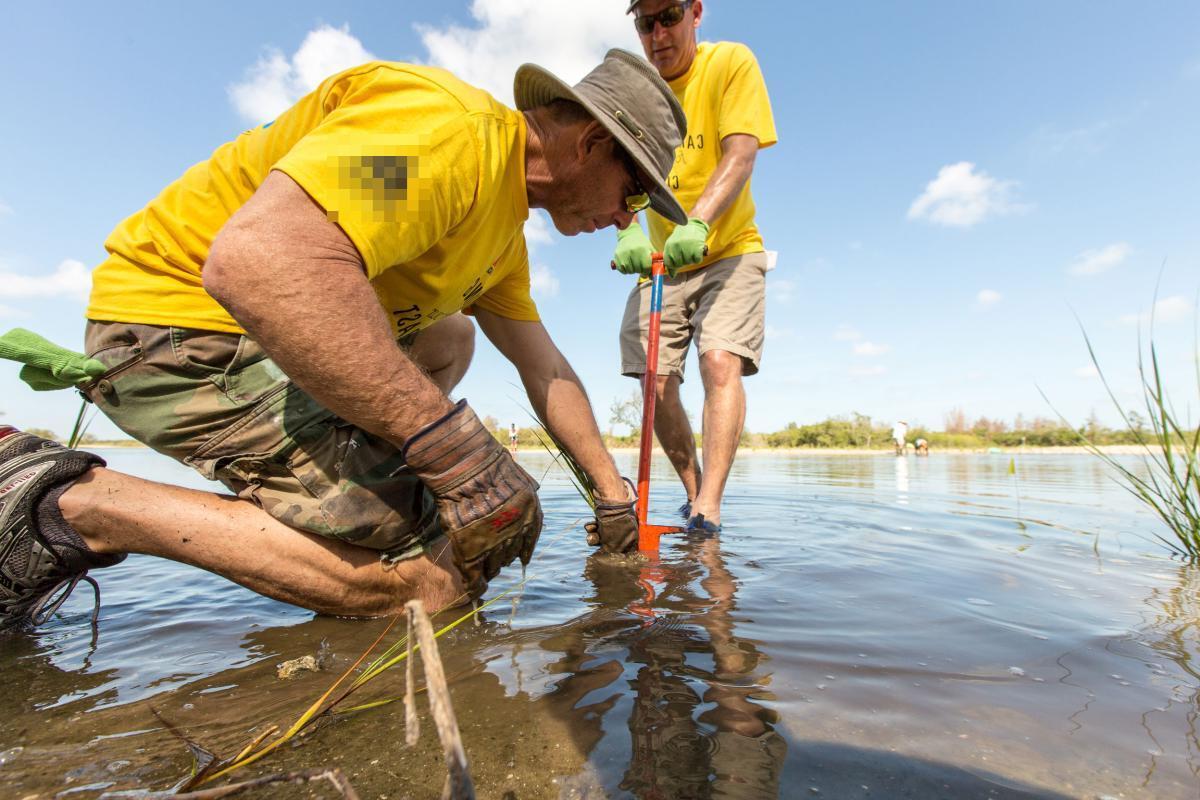
Restoration efforts are crucial for preserving our planet's natural beauty and biodiversity. These initiatives aim to revive ecosystems, protect endangered species, and combat climate change. Why are restoration efforts important? They help restore balance to ecosystems disrupted by human activities, ensuring that future generations can enjoy a healthy environment. From reforestation projects to wetland restoration, these efforts play a vital role in maintaining the delicate balance of nature. By supporting these initiatives, we contribute to cleaner air, water, and soil, which benefits all living beings. Let's dive into 40 fascinating facts about restoration efforts and their impact on our world.
Key Takeaways:
- Restoration efforts aim to bring damaged ecosystems back to their original state through reforestation, wetland restoration, and wildlife conservation. They are vital for maintaining biodiversity and combating climate change.
- Successful restoration projects, such as the reintroduction of wolves in Yellowstone National Park, demonstrate the potential for positive change. New technologies and increased awareness drive the promising future of restoration efforts.
What Are Restoration Efforts?
Restoration efforts aim to bring damaged ecosystems back to their original state. These initiatives can involve reforestation, wetland restoration, and wildlife conservation. Here are some fascinating facts about restoration efforts.
-
Reforestation involves planting trees in areas where forests have been cut down or destroyed. It helps combat climate change by absorbing carbon dioxide.
-
Wetland restoration focuses on reviving marshes, swamps, and bogs. These areas are crucial for water purification and flood control.
-
Wildlife conservation aims to protect endangered species and their habitats. This can include creating wildlife corridors and breeding programs.
-
Coral reef restoration involves growing coral in nurseries and transplanting them to damaged reefs. Healthy reefs support marine biodiversity.
-
Grassland restoration helps revive prairies and savannas. These ecosystems are home to many unique species and play a role in carbon storage.
Why Are Restoration Efforts Important?
Restoration efforts are vital for maintaining biodiversity, combating climate change, and ensuring the health of our planet. They provide numerous benefits, both for the environment and for human communities.
-
Biodiversity is enhanced through restoration, providing habitats for various species. This helps maintain ecological balance.
-
Climate change mitigation is achieved by restoring forests and wetlands, which act as carbon sinks. They absorb and store carbon dioxide from the atmosphere.
-
Water quality improves with wetland restoration. Wetlands filter pollutants and sediments from water, making it cleaner.
-
Soil health benefits from reforestation and grassland restoration. Trees and grasses prevent soil erosion and improve nutrient cycling.
-
Economic benefits arise from restoration efforts. Healthy ecosystems support industries like fishing, tourism, and agriculture.
How Are Restoration Efforts Implemented?
Restoration efforts require careful planning and collaboration between governments, organizations, and local communities. Various techniques and strategies are used to ensure successful restoration.
-
Community involvement is crucial for the success of restoration projects. Local knowledge and participation help ensure long-term sustainability.
-
Scientific research guides restoration efforts. Understanding the ecology of an area helps determine the best methods for restoration.
-
Monitoring and evaluation are essential to track the progress of restoration projects. This helps identify what works and what needs improvement.
-
Adaptive management allows for flexibility in restoration efforts. Strategies can be adjusted based on monitoring results and changing conditions.
-
Funding and resources are necessary for restoration projects. Governments, NGOs, and private donors often provide financial support.
Challenges in Restoration Efforts
Despite the benefits, restoration efforts face several challenges. These can include environmental, social, and economic obstacles.
-
Climate change poses a significant challenge. Changing temperatures and weather patterns can affect the success of restoration projects.
-
Invasive species can hinder restoration efforts. Non-native plants and animals can outcompete native species and disrupt ecosystems.
-
Land use conflicts arise when restoration projects compete with agriculture, development, or other land uses.
-
Limited funding can restrict the scope and scale of restoration efforts. Securing long-term financial support is often difficult.
-
Lack of awareness about the importance of restoration can lead to insufficient support from the public and policymakers.
Success Stories in Restoration Efforts
Many restoration projects around the world have achieved remarkable success. These examples demonstrate the potential for positive change.
-
Yellowstone National Park saw a resurgence of biodiversity after the reintroduction of wolves. This led to a cascade of ecological benefits.
-
The Great Green Wall in Africa aims to combat desertification by planting trees across the Sahel region. It has already improved soil health and provided livelihoods.
-
The Everglades in Florida have undergone extensive restoration to revive this unique wetland ecosystem. Efforts include water management and invasive species control.
-
Costa Rica has become a leader in reforestation. The country has doubled its forest cover in the past 30 years through conservation policies and incentives.
-
The Thames River in London was once declared biologically dead. Restoration efforts have brought back fish, birds, and other wildlife.
Future of Restoration Efforts
The future of restoration efforts looks promising, with new technologies and increased awareness driving progress. Continued commitment is essential for success.
-
Drones are being used to plant trees and monitor restoration sites. This technology can speed up reforestation efforts.
-
Genetic research helps identify resilient plant and animal species. These species can better withstand environmental changes.
-
Citizen science involves the public in data collection and monitoring. This increases community engagement and provides valuable information.
-
International cooperation is crucial for addressing global environmental challenges. Countries working together can achieve more significant results.
-
Education and outreach raise awareness about the importance of restoration. Schools, media, and community programs play a vital role.
Interesting Facts About Restoration Efforts
Here are some additional intriguing facts about restoration efforts that highlight their diversity and impact.
-
Mangrove restoration helps protect coastlines from storms and erosion. Mangroves also provide nursery habitats for fish.
-
Urban restoration focuses on creating green spaces in cities. Parks and gardens improve air quality and provide recreational areas.
-
River restoration aims to improve water flow and habitat quality. This benefits fish populations and reduces flooding.
-
Pollinator gardens support bees, butterflies, and other pollinators. These gardens help ensure the pollination of crops and wild plants.
-
Seagrass restoration enhances marine ecosystems. Seagrasses provide habitat for fish and help stabilize the seabed.
-
Peatland restoration is vital for carbon storage. Peatlands store more carbon per unit area than forests.
-
Agroforestry integrates trees into agricultural landscapes. This practice improves soil health and increases biodiversity.
-
Fire management is used in some restoration efforts. Controlled burns can help maintain healthy ecosystems.
-
Restoration ecology is a growing field of study. Researchers develop new methods and strategies for effective restoration.
-
Global initiatives like the UN Decade on Ecosystem Restoration aim to scale up restoration efforts worldwide. This initiative seeks to prevent, halt, and reverse ecosystem degradation.
The Power of Restoration Efforts
Restoration efforts are crucial for preserving ecosystems and biodiversity. These projects help repair damaged environments, bringing back native species and improving water quality. They also combat climate change by sequestering carbon and reducing greenhouse gases. Communities benefit too, gaining cleaner air, more green spaces, and better resilience against natural disasters.
Volunteers, scientists, and policymakers all play vital roles in these initiatives. Their combined efforts lead to healthier, more sustainable environments. Funding and public support are essential for the success of these projects. Every small action, from planting trees to cleaning rivers, contributes to a larger impact.
Understanding the importance of restoration can inspire more people to get involved. Whether through volunteering, donating, or simply spreading awareness, everyone can make a difference. The future of our planet depends on these collective efforts to restore and protect our natural world.
Frequently Asked Questions
Was this page helpful?
Our commitment to delivering trustworthy and engaging content is at the heart of what we do. Each fact on our site is contributed by real users like you, bringing a wealth of diverse insights and information. To ensure the highest standards of accuracy and reliability, our dedicated editors meticulously review each submission. This process guarantees that the facts we share are not only fascinating but also credible. Trust in our commitment to quality and authenticity as you explore and learn with us.


